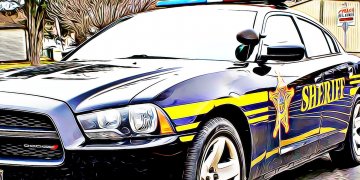Rescue teams are an essential component of disaster management and recovery operations. As such, they’re constantly on the lookout for the best equipment and strategies to carry out complex rescue missions effectively. During emergencies, the use of watercraft is often necessary; they’re efficient tools for search and rescue missions, transport, and support during emergencies.
Explore some of the essential watercraft used by rescue teams, as well as their unique features and capabilities. Doing so will help you understand their importance in disaster management and emergency response operations.
Inflatable Boats
Inflatable boats are the most commonly used watercraft by rescue teams. They are lightweight, easy to transport, and can handle rough waters. They come in various sizes, ranging from small inflatable kayaks to large inflatable rafts, and they’re ideal for search and rescue missions in shallow waters, flooded areas, and small rivers or streams. Whether the rescue teams are using Wing boats or inflatable boats with aluminum floors, they must have a solid understanding of which are most practical for responding effectively in aquatic situations.
Jet Skis
Jet skis are another popular watercraft used by rescue teams. They’re fast, agile, and workers can use them in both still and rough waters. Their small size makes them ideal for search and rescue missions in narrow waterways, coves, and bays. Jet skis are often used along with a rescue sled or basket to transport stranded victims or essential supplies.
High-Speed Boats
High-speed boats are designed for speed and superior handling during emergencies. Marine police and Coast Guard units commonly use these vessels for maritime rescue missions. Their speed and agility allow teams to cover long distances quickly and reach the emergency sites in a timely manner. High-speed boats contain high-powered engines, communication systems, and various safety equipment, all of which are necessary for rescue operations.
Hovercrafts
Hovercrafts are amphibious vehicles that can travel on both land and water. They’re ideal for search and rescue missions over mudflats, swamps, marshes, and other shallow waters. Hovercrafts use powerful fans and air-cushion technology that allows them to float above the water, reducing friction and increasing speed. They can easily traverse difficult terrains and reach the emergency sites quickly.
Helicopters
While not categorized as watercraft, helicopters are used for search and rescue missions in remote and hard-to-reach areas, making them perfect for rescue operations over water. They typically carry advanced communication systems, medical equipment, and rescue ropes that allow teams to access emergency sites and transport rescued individuals. Helicopters are great for carrying critical equipment and supplies during emergencies, giving teams flexibility when it matters most.
The Right Watercraft Can Save Lives
Various forms of watercraft are essential for different rescue teams, including the Coast Guard, marine police, and other disaster response workers. These vessels are designed to perform a wide range of functions and can handle an array of challenging terrains. Emergency responders must understand the utility of these vehicles in saving lives and carrying out rescue operations effectively so they can do their part in emergency scenarios.





















































































